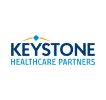The merits of strategic planning and what it is, or isn’t, often becomes the topic of heated debate.
There is no right answer. There is only the right fit. As your executive team or board embarks upon the strategic planning process, you must critically decide on what your key outcomes for the process are and what success looks like in the next year.
The outcome from the strategic planning process goes beyond just building a plan. In fact, it’s a series of outcomes that build upon each other to ultimately transform your organization to reach your desired future state.
What can be categorically said about the planning process is that it isn’t simply about creating a plan. It’s about addressing the needs of your organization, creating a plan, and aligning your organization around a process to reach your desired future state.
With that, here are the four foundational outcomes you can adapt to help your organization understand what the planning process should do to support your vision of success:
Outcome 1 – Build an Articulated Plan
The obvious place to start during the planning process is building a plan. It’s the very foundation that articulates where your organization is going and why. During the plan’s creation, be clear about what your desired outcomes are from the plan.
Get the Free Guide and Canvas to Build a Solid Growth Strategy
Outcome 2 – Focus on Strategic Differentiation
Build a plan that’s focused on your strategic differentiation. A generic plan that matches your competition isn’t going to do you a bit of good. Focus your plan on what you’re best at, how you’re going to play, and what you’re going to do to win. You’ll need to complete research from a competitive, market, and customer perspective to complete this outcome.
Outcome 3 – Align Your Organization
Aligning your organization begins by taking the big ideas in your strategic plan, the big priorities you’re focusing on, and breaking them down through the organization. Everybody always strives for organizational alignment, but break it down and take it one step at a time. You might consider easing the organization into the process, implementing different aspects of your plan through the first year and then taking it a step further the next year. Sometimes diving in feet first can be an overwhelming change that leads to defeat instead of alignment.
Outcome 4 – Agility and Organizational Transformation
So you have a plan that’s truly strategic and your organization is aligned around it. For planning to reach its ultimate outcome, you need to put a process around managing it so it doesn’t just sit on the shelf. It answers the question, “Are we making progress and do we need to adapt the strategy?” Having a static plan is a big complaint people have about strategic planning, so make it dynamic by putting a rhythm in place. We recommend a monthly or quarterly review process to talk about progress against plan, make adaptations, and feed it throughout the organization.
Each outcome from the planning process builds upon the previous. Having an articulated plan that focuses on your strategic differentiation, aligning your organization around your priorities, and driving the ongoing execution process will transform your organization.













thanks Erica, u helped me a lot through your videos
Success key:
is to make a plan that touch company ambition toward future
I like the idea behind outcome 2. Their is a business for everything out there. Aside from the tech sector innovation is very rare and every business idea has been done already. The real key is creating a brand that is different from the crowd.